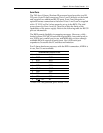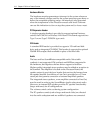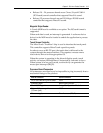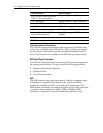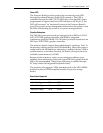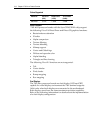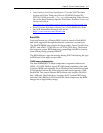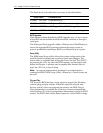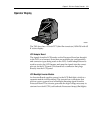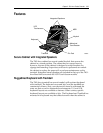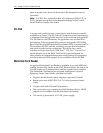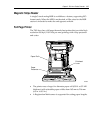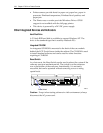
Chapter 2: 7401-4xxx Product Overview 2-19
Advanced Power Management
The 7401-45xx processor BIOS has support for 1.2 Advanced Power
Management (APM). The version of APM drivers loaded in the
operating system by the user will determine to which specification the
BIOS will adhere. In either case, the energy saving Standby mode can
be initiated by a time-out period set by the user.
When in Stand By mode, the Processor Board reduces power
consumption by utilizing the processor System Management Mode
(SMM) capabilities and also spinning down hard drives and turning off
VESA DPMS compliant monitors. During setup, the user may select
which DPMS mode (Stand By, Suspend, Auto, or Off) is sent to the
monitor. The ability to respond to external interrupts is fully
maintained while in Stand By mode allowing the system to service
requests such as in-coming data or network messages while
unattended. The user may also make any keyboard or mouse activity
to take the system out of the energy saving Stand By mode. When this
occurs, the monitor and IDE drives are turned back on immediately.
Advanced Power Management (APM) is achieved by the following:
• DOS requires a driver (FS-APM.dos)
• NT requires a driver (NCRSYSM.SYS)
• Windows 2000 must enable the operating system APM setting. The
OS APM setting is disabled by default. NCR Gold Drivers are
enabled in this setting by selecting:
Start, Control Panel, Power Options, APM tab and check the box
Enable Advance Power Management Support
Click Ok to finish.
ACPI
The 7401-46xx terminal BIOS supports Advance Configuration Power
Interface (ACPI) 2.0 power management. Primary differences between
APM and ACPI are as follows:
• On an APM- managed terminal, the BIOS determines when to
switch between power states and also performs the switch. When
using ACPI, the operating system determines when to switch and
informs the BIOS to perform the switch.



